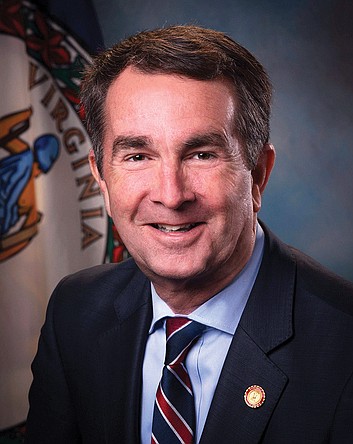State help to fix Richmond’s sewer overflow problems comes up short
Jeremy M. Lazarus | 7/29/2021, 6 p.m.
How about $50 million?
That’s Gov. Ralph S. Northam’s response to an appeal from nine Richmond Democrats in the General Assembly for $883 million to enable Richmond to end its discharge of partially treated human waste into the James River during heavy rainfalls, including storms earlier this week.
In Gov. Northam’s response, it is clear that he does not propose to go all in to address the problem. His plan calls for distributing $125 million to Richmond and two other localities, Alexandria and Lynchburg, that also need major fixes to their sewer systems to end discharges into state rivers. Richmond and Alexandria each would get $50 million and Lynchburg would get $25 million.
“That falls far short,” a disappointed Richmond state Sen. Joseph D. “Joe” Morrissey stated in an email to the Free Press after reviewing the governor’s statement.
Sen. Morrissey stated that when the legislature reconvenes in special session on Monday, Aug. 2, to vote on how to allocate Virginia’s share from the federal American Rescue Plan, “I will continue to fight for an increased amount that can better aid the City of Richmond and its residents.”
Henrico Delegate Lamont Bagby, chair of the Virginia Legislative Black Caucus, also pledged Wednesday to push for boosting the funding the city would receive to cut its polluting impact on the river.
The governor’s proposal on sewers is just one item on a list Delegate Bagby is creating with General Assembly lead- ers on ways to spend the $4.3 billion the state is to receive from the American Rescue Plan, the $2.3 trillion pandemic relief package President Biden proposed after taking office and that Congress passed in March.
The governor has been issuing his ARP spending proposals ahead of the start of the special legislative session, which also was called to fill vacant judgeships.
Instead of pouring money into sewer system fixes, the governor has proposed to ear- mark far bigger chunks of the ARP money to address other priorities. That includes providing more than $900 million to shore up the state’s depleted unemployment insurance fund and improve Virginia Employment Commission service to the unemployed. Also on the list is $286.5 million to help smaller communities across the state pay for upgrades to aging drinking water systems and wastewater treatment plants, and $485 million to strengthen mental health services in the state.
The governor also wants to invest $700 million to expand high-speed broadband service to rural communities and sections of cities that have never been connected and spend $250 million to assist public school systems to upgrade ventilation systems in their school buildings.
For Richmond, getting a big influx of state dollars to resolve its sewer system problem could keep the monthly charge for sewer service from soaring in the next few years.
At a media briefing on Wednesday, Mayor Levar M. Stoney praised the governor for providing the $50 million but called it just a down payment on the commitment Richmond will need in state and federal resources.
Without sustained state and federal aid, Mayor Stoney projected city residents would see the charge for sewer service rise from the current $500 to $700 a year to $2,200 a year to enable the city to cover the cost of ending illegal waste discharges.
Richmond is facing a 2035 deadline to get it done.
The mayor said such an increase would hammer people in the 23 census tracts with the lowest incomes. He said he does not want to see the city forced to improve the water quality of the James River, dubbed “America’s founding river,” at a cost of creating “financial injustice” for people of color who represent a majority of the residents in those census tracts.
The costly problem stems from the fact that Richmond, like Alexandria and Lynchburg, connected a big portion of its stormwater drainage systems to its sewer system. Richmond created the link in the late 1800s and ended the practice in the 1920s, city officials said.
In Richmond, the storm and sewer systems are tied together in one third of the city, primarily Downtown, North Side and Church Hill. The huge volumes of water that rain creates forces discharges into the river to prevent damage to the city’s wastewater treatment plant.
Discharges into the river worked until state and federal requirements were imposed to end the municipal practice of getting rid of waste by polluting nearby rivers. Richmond started work on ending the combined sewer overflow, or CSO, discharges in 1988 and to date has appropriated more than $350 million.
Mayor Stoney has said that 90 percent of the problem has been fixed, but he said dealing with the final 10 percent would be the most expensive portion.
The Richmond General Assembly delegation, though, appears to be facing an uphill battle to get more funding to fix the CSO problem given the other priorities and the fact that Prince William Delegate Luke Torian, chair of the House Appropriations Committee, has announced that no amendments will be allowed to the ARP plan the governor submits.
Much of the governor’s plan is focused on major constituencies. For example, the investment in the unemployment trust fund would allow businesses that laid off workers during the pandemic last year to avoid large increases in state assessments to replenish the fund.
The bottom line: Richmond is facing having to self-finance its CSO fixes.







